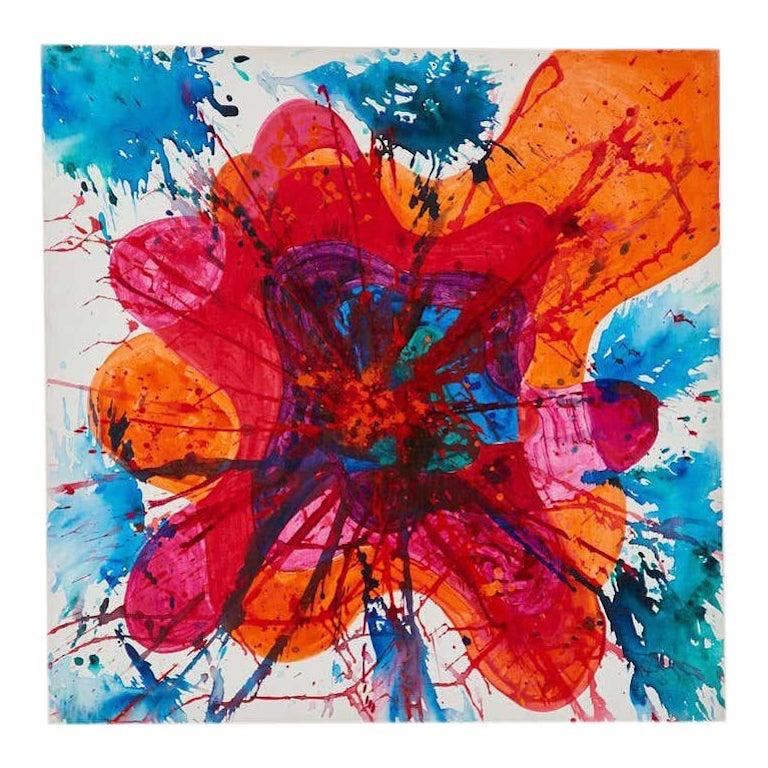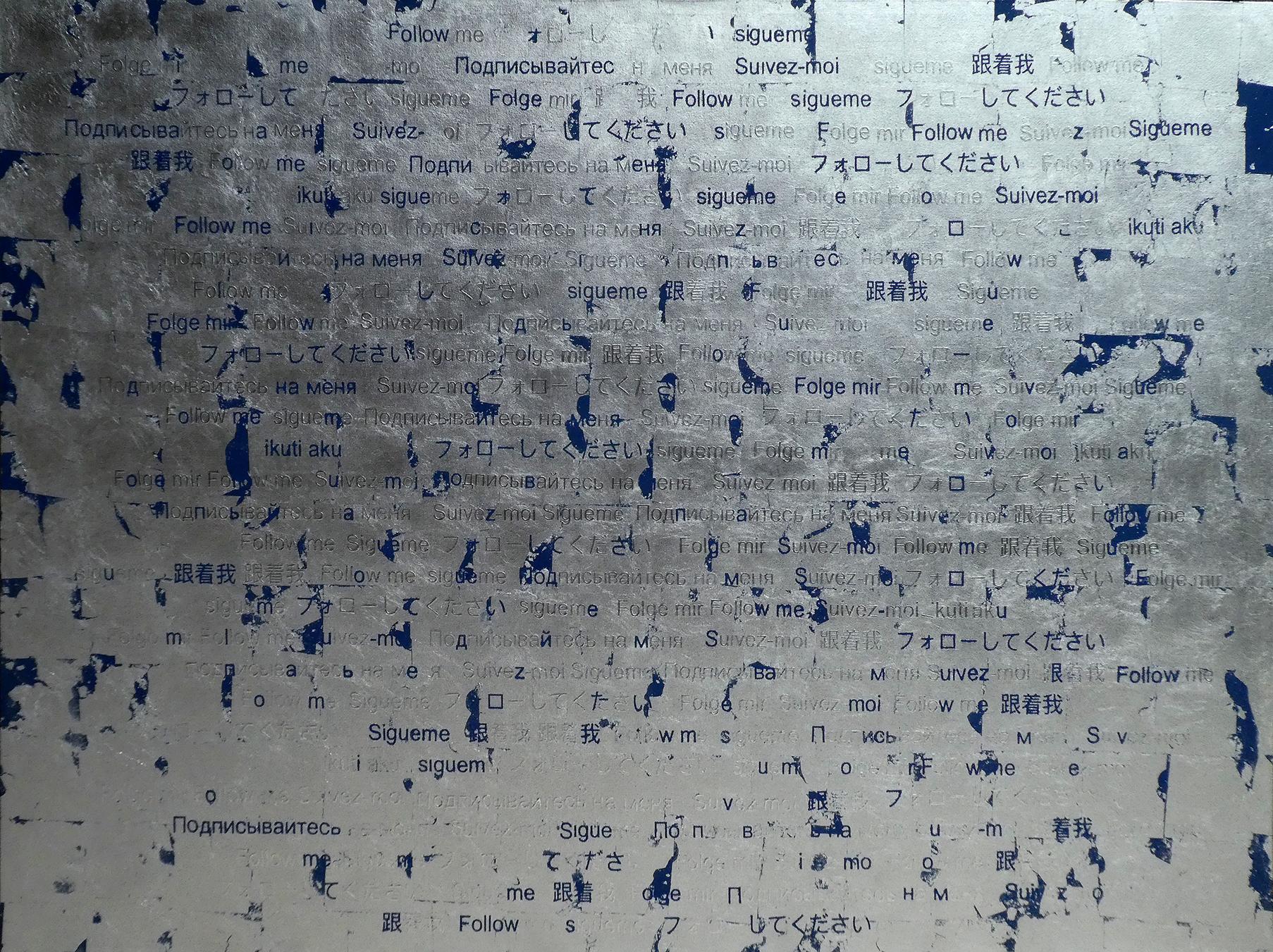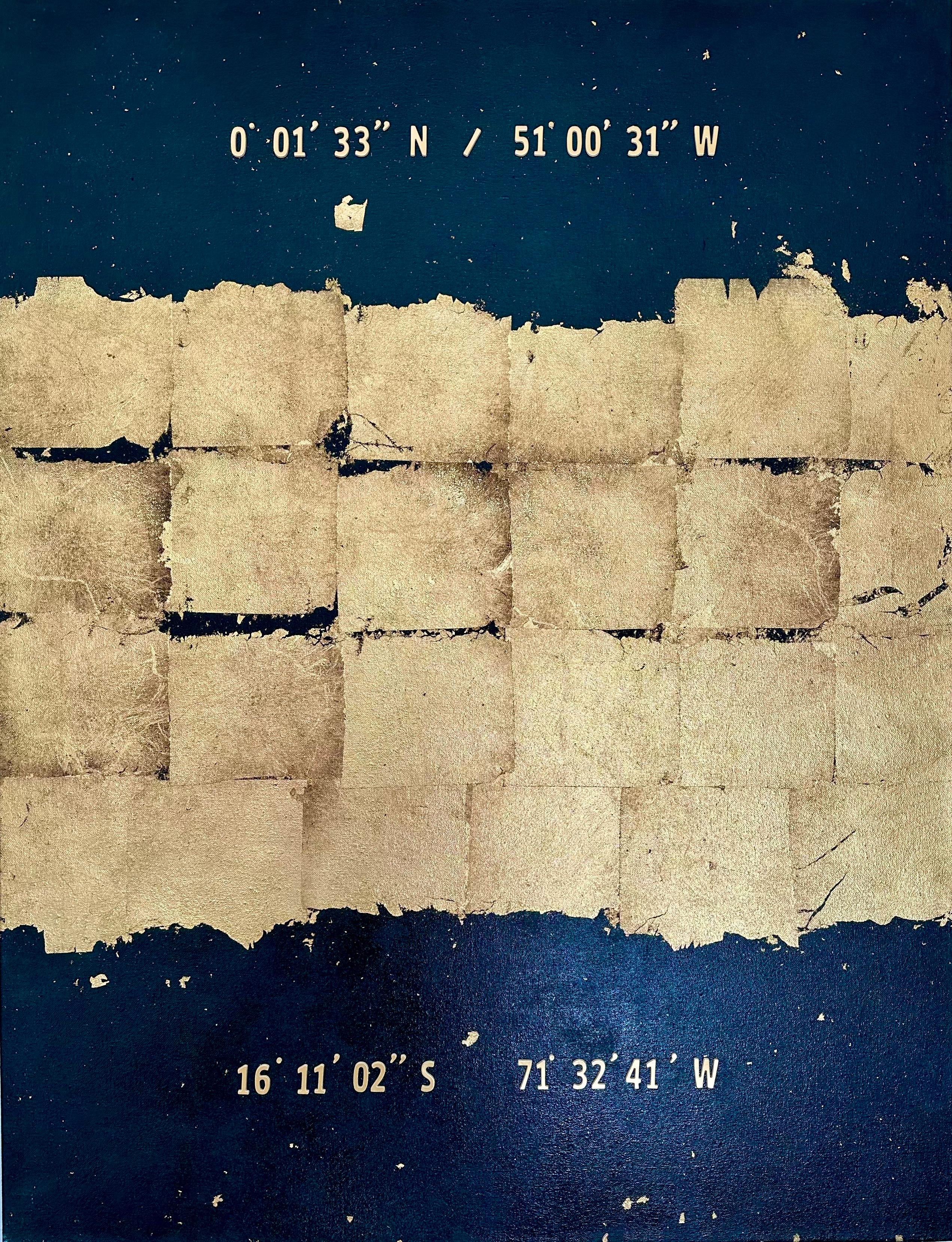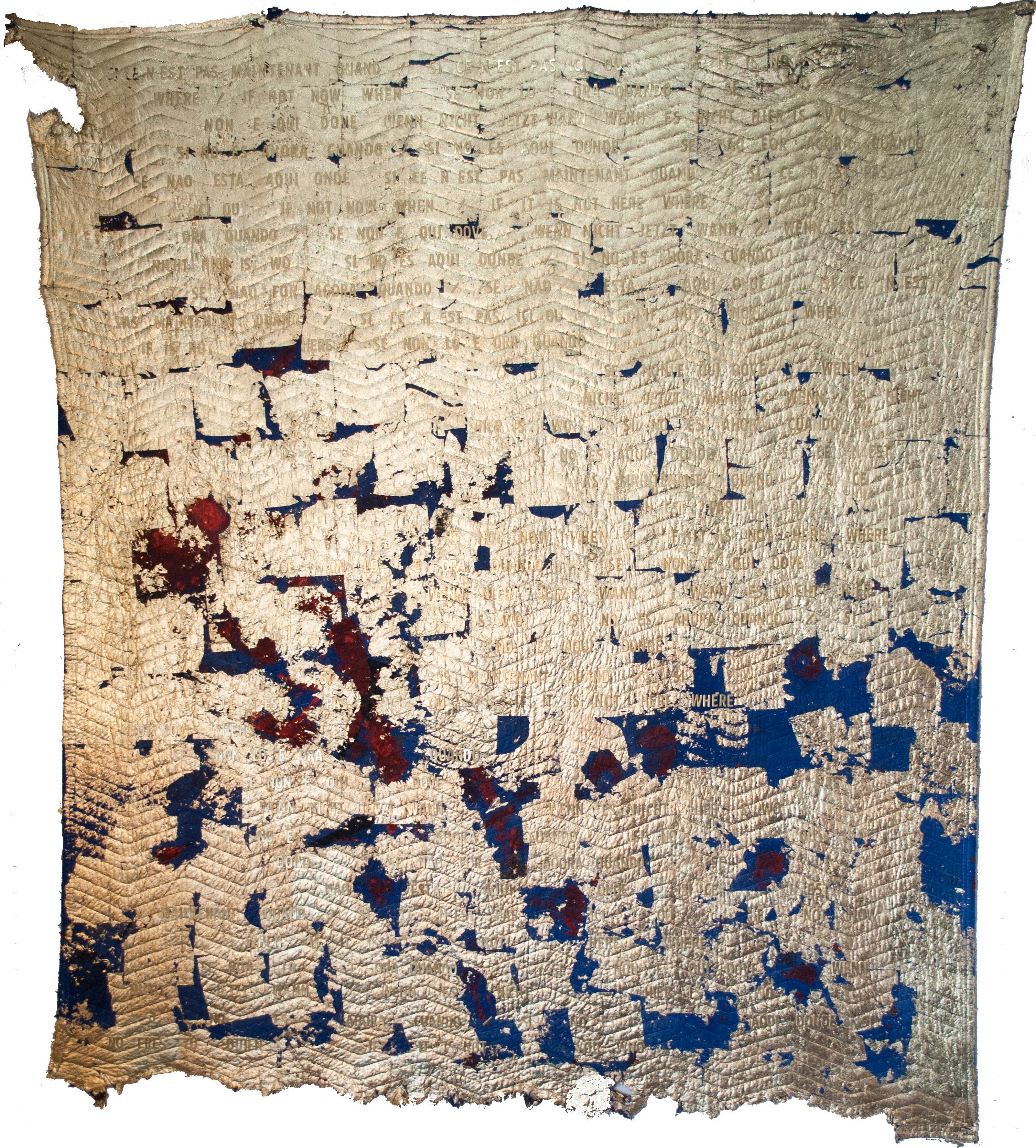Items Similar to “Abstract”
Want more images or videos?
Request additional images or videos from the seller
1 of 13
Gufor Malyanov“Abstract”1952
1952
About the Item
Very unusual and boldly colored original oil on canvas abstract painting done by the Russian artist Gufor Malyanov. Signed in cyrillic verso, dated 1952 and titled in cyrillic “Abstract”. Condition is excellent. Presently unframed. The painting could be hung unframed. There is no current biography for the artist. Provenance: A Sarasota collector.
- Creator:Gufor Malyanov (Russian)
- Creation Year:1952
- Dimensions:Height: 29 in (73.66 cm)Width: 34 in (86.36 cm)Depth: 1 in (2.54 cm)
- Medium:
- Movement & Style:
- Period:
- Framing:Framing Options Available
- Condition:
- Gallery Location:Southampton, NY
- Reference Number:1stDibs: LU14114158542
About the Seller
4.9
Platinum Seller
These expertly vetted sellers are 1stDibs' most experienced sellers and are rated highest by our customers.
Established in 1977
1stDibs seller since 2013
465 sales on 1stDibs
Typical response time: 1 hour
- ShippingRetrieving quote...Ships From: Sarasota, FL
- Return PolicyA return for this item may be initiated within 7 days of delivery.
More From This SellerView All
- “Abstract in Orange”Located in Southampton, NYHere for your consideration is a vibrant abstract in mainly orange with yellow highlights by the California artist Edward Darrell Crisp. Signed with artist monogram lower right. Sig...Category
1980s Post-Modern Abstract Paintings
MaterialsCanvas, Oil
- “Gulfside”By Syd SolomonLocated in Southampton, NYOriginal, oil paint and acrylic paint on canvas by the well known American artist, Syd Solomon. Signed bottom middle by the artist. Titled and dated verso 1983. Condition is excellent. Original gallery floating frame. Overall framed measurements are 38 by 42 inches. Provenance: A Sarasota, Florida collector. SYD SOLOMON BIOGRAPHY Written by Dr. Lisa Peters/Berry Campbell Gallery “Here, in simple English, is what Syd Solomon does: He meditates. He connects his hand and paintbrush to the deeper, quieter, more mysterious parts of his mind- and he paints pictures of what he sees and feels down there.” --Kurt Vonnegut Jr. from Palm Sunday, 1981 Syd Solomon was born near Uniontown, Pennsylvania, in 1917. He began painting in high school in Wilkes-Barre, where he was also a star football player. After high school, he worked in advertising and took classes at the Art Institute of Chicago. Before the attack on Pearl Harbor, he joined the war effort and was assigned to the First Camouflage Battalion, the 924th Engineer Aviation Regiment of the US Army. He used his artistic skills to create camouflage instruction manuals utilized throughout the Army. He married Ann Francine Cohen in late 1941. Soon thereafter, in early 1942, the couple moved to Fort Ord in California where he was sent to camouflage the coast to protect it from possible aerial bombings. Sent overseas in 1943, Solomon did aerial reconnaissance over Holland. Solomon was sent to Normandy early in the invasion where his camouflage designs provided protective concealment for the transport of supplies for men who had broken through the enemy line. Solomon was considered one of the best camoufleurs in the Army, receiving among other commendations, five bronze stars. Solomon often remarked that his camouflage experience during World War II influenced his ideas about abstract art. At the end of the War, he attended the École des Beaux-Arts in Paris. Because Solomon suffered frostbite during the Battle of the Bulge, he could not live in cold climates, so he and Annie chose to settle in Sarasota, Florida, after the War. Sarasota was home to the John and Mable Ringling Museum of Art, and soon Solomon became friends with Arthur Everett “Chick” Austin, Jr., the museum’s first Director. In the late 1940s, Solomon experimented with new synthetic media, the precursors to acrylic paints provided to him by chemist Guy Pascal, who was developing them. Victor D’Amico, the first Director of Education for the Museum of Modern Art, recognized Solomon as the first artist to use acrylic paint. His early experimentation with this medium as well as other media put him at the forefront of technical innovations in his generation. He was also one of the first artists to use aerosol sprays and combined them with resists, an innovation influenced by his camouflage experience. Solomon’s work began to be acknowledged nationally in 1952. He was included in American Watercolors, Drawings and Prints at the Metropolitan Museum of Art, New York. From 1952–1962, Solomon’s work was discovered by the cognoscenti of the art world, including the Museum of Modern Art Curators, Dorothy C. Miller and Peter Selz, and the Whitney Museum of American Art’s Director, John I. H. Baur. He had his first solo show in New York at the Associated American Artists Gallery in 1955 with “Chick” Austin, Jr. writing the essay for the exhibition. In the summer of 1955, the Solomons visited East Hampton, New York, for the first time at the invitation of fellow artist David Budd...Category
1980s Abstract Expressionist Abstract Paintings
MaterialsCanvas, Oil, Acrylic
- “Lightride”By Syd SolomonLocated in Southampton, NYHere for your consideration is a great example of the artwork of the well known American artist, Syd Solomon. Signed top left. Titled and dated verso 1978. The painting is oil and acrylic paint on mounted synthetic canvas. Condition is excellent. Overall framed measurements are 44.75 by 24.5 inches. Provenance: A Sarasota, Florida collector. SYD SOLOMON BIOGRAPHY American 1917-2004 Written by Dr. Lisa Peters/Berry Campbell Gallery “Here, in simple English, is what Syd Solomon does: He meditates. He connects his hand and paintbrush to the deeper, quieter, more mysterious parts of his mind- and he paints pictures of what he sees and feels down there.” --Kurt Vonnegut Jr. from Palm Sunday, 1981 Syd Solomon was born near Uniontown, Pennsylvania, in 1917. He began painting in high school in Wilkes-Barre, where he was also a star football player. After high school, he worked in advertising and took classes at the Art Institute of Chicago. Before the attack on Pearl Harbor, he joined the war effort and was assigned to the First Camouflage Battalion, the 924th Engineer Aviation Regiment of the US Army. He used his artistic skills to create camouflage instruction manuals utilized throughout the Army. He married Ann Francine Cohen in late 1941. Soon thereafter, in early 1942, the couple moved to Fort Ord in California where he was sent to camouflage the coast to protect it from possible aerial bombings. Sent overseas in 1943, Solomon did aerial reconnaissance over Holland. Solomon was sent to Normandy early in the invasion where his camouflage designs provided protective concealment for the transport of supplies for men who had broken through the enemy line. Solomon was considered one of the best camoufleurs in the Army, receiving among other commendations, five bronze stars. Solomon often remarked that his camouflage experience during World War II influenced his ideas about abstract art. At the end of the War, he attended the École des Beaux-Arts in Paris. Because Solomon suffered frostbite during the Battle of the Bulge, he could not live in cold climates, so he and Annie chose to settle in Sarasota, Florida, after the War. Sarasota was home to the John and Mable Ringling Museum of Art, and soon Solomon became friends with Arthur Everett “Chick” Austin, Jr., the museum’s first Director. In the late 1940s, Solomon experimented with new synthetic media, the precursors to acrylic paints provided to him by chemist Guy Pascal, who was developing them. Victor D’Amico, the first Director of Education for the Museum of Modern Art, recognized Solomon as the first artist to use acrylic paint. His early experimentation with this medium as well as other media put him at the forefront of technical innovations in his generation. He was also one of the first artists to use aerosol sprays and combined them with resists, an innovation influenced by his camouflage experience. Solomon’s work began to be acknowledged nationally in 1952. He was included in American Watercolors, Drawings and Prints at the Metropolitan Museum of Art, New York. From 1952–1962, Solomon’s work was discovered by the cognoscenti of the art world, including the Museum of Modern Art Curators, Dorothy C. Miller and Peter Selz, and the Whitney Museum of American Art’s Director, John I. H. Baur. He had his first solo show in New York at the Associated American Artists Gallery in 1955 with “Chick” Austin, Jr. writing the essay for the exhibition. In the summer of 1955, the Solomons visited East Hampton, New York, for the first time at the invitation of fellow artist David Budd...Category
1970s Abstract Expressionist Abstract Paintings
MaterialsCanvas, Oil, Acrylic, Board
- “Double Play”By John LittleLocated in Southampton, NYStrong, vibrant original oil on canvas painting titled “Double Play” by the well known American artist, John Little. Signed and dated lower left, 1963. Signed, dated and titled vers...Category
1960s Post-Modern Abstract Paintings
MaterialsCanvas, Oil
- "Big Catch"By Nahum TschacbasovLocated in Southampton, NYOil on canvas Signed and dated top right 1972 Painting exhibited at the National Arts Club, New York Nahum Tschacbasov Retrospective, June 2013Category
1970s Post-Modern Abstract Paintings
MaterialsOil, Canvas
- "Untitled"By Nahum TschacbasovLocated in Southampton, NYOil on canvas Signed and dated lower right 1982 Painting exhibited at the National Arts Club, New York Nahum Tschacbasov Retrospective, June 2013Category
1980s Post-Modern Paintings
MaterialsCanvas, Oil
You May Also Like
- Modern Abstract Oil PaintingLocated in Rio Vista, CADramatic abstract oil on canvas painting by Gladys Regier-Vaughan (American 1923-1987). Vaughan was a New York stage director who started painting in 1970. Signed and dated verso.Category
20th Century Modern Abstract Paintings
MaterialsCanvas, Oil
- Cangiante ArancioneBy Giulio TurcatoLocated in Firenze, FIGiulio Turcato (Mantova, 16 marzo 1912 – Roma, 22 gennaio 1995) è stato un artista italiano, fra i principali esponenti dell'astrattismo informale italiano.Category
1980s Modern Abstract Paintings
MaterialsCanvas, Mixed Media, Oil
- Amish Farmscape #3By Edmund LewandowskiLocated in Los Angeles, CAAmish Farmscape #3, 1984, oil on canvas, 40 x 30 inches, signed and dated lower right; signed, dated, and titled verso About the Painting Amish Farmscape #3 is part of a multi-painting series of barns completed in the early 1980s for an exhibition at New York’s prestigious Sid Deutsch Gallery. Lewandowski painted this work at an important point in his career. It was the first major project undertaken by Lewandowski after his retirement from serving as the Chairman of Winthrop University’s Art Department, the last academic position he held after teaching for nearly thirty years. Lewandowski had been inspired to work on the series by a visit to Lancaster County, Pennsylvania. Like his friend and mentor, Charles Sheeler, Lewandowski had always been fascinated by vernacular architecture and the Amish barns of Pennsylvania brought back memories of rural scenes Lewandowski had painted in the Midwest much earlier in his career. Amish Farmscape #3 is a strong example of Lewandowski’s late precisionist work. The complexity of the composition and Lewandowski’s technical acumen are on full display. Being relieved of the burdens of teaching and administering a university art department likely allowed Lewandowski greater freedom and most importantly more time to complete the Amish Farmscape series. Although Lewandowski’s brand of precisionism changed throughout the years, he never deviated from the core tenets of the Immaculate School artists. In this work, we see simplified and flattened forms, the use of ray-lines to define light and space, the elimination of extraneous details, a polished almost machine-like finish, and the complete lack of visible brushstrokes, all hallmarks of the precisionist painters. Lewandowski was the last of the 20th century precisionists and in Amish Farmscape #3, we see just how successfully he continued to work in this style until his death in 1998. About the Artist Edmund Lewandowski was among the best of the second-generation precisionist painters. He was born and raised in Milwaukee, Wisconsin and studied at the Layton School of Art with Garrett Sinclair. Lewandowski achieved early success when in 1936 two of his watercolors were shown at the Phillips Collection as part of a Federal Art Project exhibition. Then, in 1937, his work was first exhibited at Edith Halpert’s Downtown Gallery which represented Lewandowski into the 1950s. Under Halpert’s guidance, Lewandowski continued to explore watercolor as his main medium during the 1930s and 1940s, since the gallery already represented Charles Sheeler, who worked primarily in oils. Sheeler became Lewandowski’s major influence as the primary leader of the ill-defined, but very recognizable Immaculate School artists, which included other Downtown Gallery painters, Niles Spencer, George Ault, and Ralston Crawford, as well as Charles Demuth and Preston Dickinson, both of whom died at a young age and had been represented by the Charles Daniel Gallery. Sheeler is credited with giving Lewandowski technical advice on how to make his paintings more precise and tightly rendered and by all accounts, Sheeler was a fan of Lewandowski’s work. Through the Downtown Gallery, Lewandowski’s paintings were accepted into major national and international exhibitions and purchased by significant museums and collectors. Franklin and Eleanor Roosevelt and Nelson Rockefeller acquired works by Lewandowski. He was included in the Museum of Modern Art’s important 1943 exhibition, American Realists and Magic Realists as well as juried exhibitions at the Whitney Museum of American Art, the Pennsylvania Academy of Fine Arts, and the Art Institute of Chicago. Lewandowski also completed commissions for magazines during the 1940s and 1950s, including several covers for Fortune. Throughout his career, Lewandowski explored urban and rural architecture, industry, machinery, and nautical themes. Looking back on his career, Lewandowski wrote, “My overwhelming desire as an artist through the years has been to record the beauty of man-made objects and energy of American industry on canvas. For as far back as I can recall, the cityscapes, farms and depictions of industrial power and technological efficiency has had a great attraction for me. I try to treat these observations with personal honesty and distill these impressions to a visual order.” Lewandowski is credited with extending precisionism to the Midwest and successfully continuing the style into the 1990s, three decades after Sheeler’s death and six decades after Demuth’s passing. Late in his career, Lewandowski enjoyed a resurgence of popularity as he was represented during the 1980s by New York’s Sid Deutsch and Allison Galleries...Category
Mid-20th Century American Modern Landscape Paintings
MaterialsCanvas, Oil
- "Untitled" Painting 39" x 30" inch by Patricio GonzalezBy Patricio GonzalezLocated in Culver City, CA"Untitled" Painting 39" x 30" inch by Patricio Gonzalez Patricio Gonzalez Bezanilla (1974), studied at the School of Visual Arts at the University o...Category
21st Century and Contemporary Modern Interior Paintings
MaterialsGold Leaf
- "Follow me / Like me" Oil painting 79" x 59" inch by Patricio GonzalezBy Patricio GonzalezLocated in Culver City, CA"Follow me / Like me" Oil painting 79" x 59" inch by Patricio Gonzalez oil and silver leaves on canvas From "Looking for Happiness" series LOOKING FOR HAPPINESS Like "el dorado", a cultural construction, a myth, the Looking for happiness series talks about the illusion of happiness. Using coordinates between different geographical points and world views, seeking to generate a dialogue between stories. In this way, places speak to tell us about degraded utopias, religious crusades, martyrs and oppressors, wars, victories, and defeats. All searches for what cannot be found. The infinite existing possibilities, in this continuous present and its accumulation, to be history. The utopian idea of achieving completeness or completeness. The transformation of the fabric into jewelry, the transmutation that moves from the sacred to the economic. The "object of desire" is the engine of life and its different permutations. Curriculum vitae Born on February 14, 1974, Santiago, Chile. Study at the School of Fine Arts of t he University of Chile and the University Complutense Hotels guest, Spain. He also attended workshops in painting, drawing and engraving the Circulo de Bellas Artes in Madrid. Work in the study of Guillermo Muñoz Vera, Madrid. SOLO EXHIBITIONS 2018 Kadoshiro Art Gallery “Looking for Happiness” Eduardo Lira Art Gallery “IT ́s not here” 2017 Off the wall / serie Golden Bitches/Beaches>(march 9) Galeria Artium-Miami,Usa 2016 ”Razones para la venganza” Galeria Artium-Miami,Usa. 2015 "Out Doors", Gallery Latam Santiago-Chile. 2013 "Coming down like flies" Latam Gallery Santiago, Chile. 2012 "Coto de Caza" Artium Gallery, Santiago, Chile. 2010 "Reasons for permanecia" Praxis Gallery, Santiago, Chile. 2009 "Fissure postcard" fifhy one Dot Gallery, Miami USA. 2008 "Connotations Sinister Galeria Trece, Santiago-Chile. 2007 "From the periphery to the center" Gallery 000 ", Santiago-Chile. 2005 "Lost Time" Gallery Forest, Consepcion- Chile. 2006 "Permanent Revolution" Artium Gallery, Santiago-Chile. 2005 Providencia Santiago Chile-Cultural Center, “Carrera” 2004 "personal mythologies", Praxis Gallery, Santiago-Chile GROUP EXHIBITIONS 2019 West palm Beach Art...Category
21st Century and Contemporary Modern Interior Paintings
MaterialsSilver
- "If not now when" Abstract Painting 85" x 76" inch by Patricio GonzalezBy Patricio GonzalezLocated in Culver City, CA"If not now when" Abstract Painting 85" x 76" inch by Patricio Gonzalez Oil and gold leaves on cargo blanket From "Looking for Happiness" series ...Category
21st Century and Contemporary Modern Interior Paintings
MaterialsSilver





